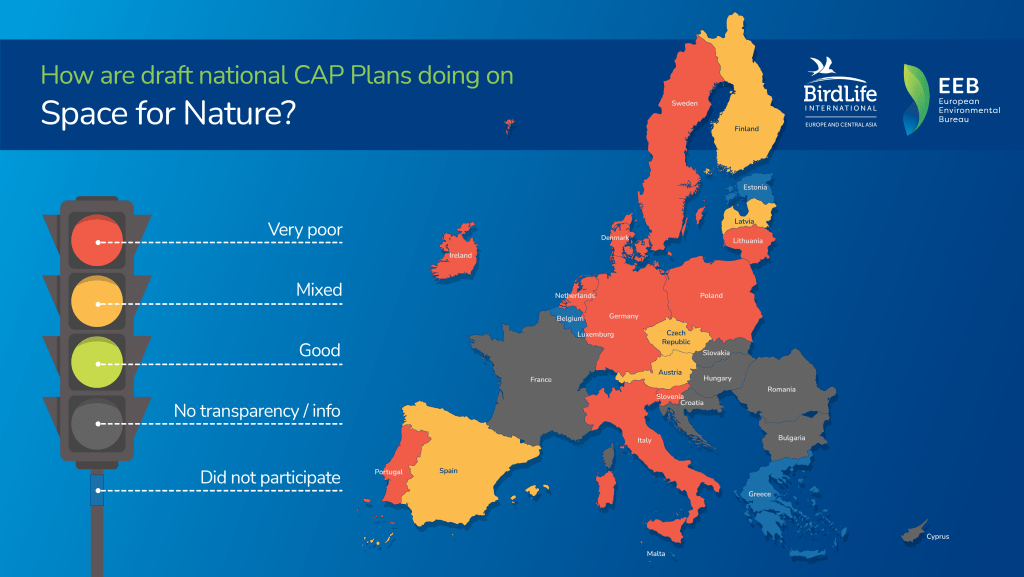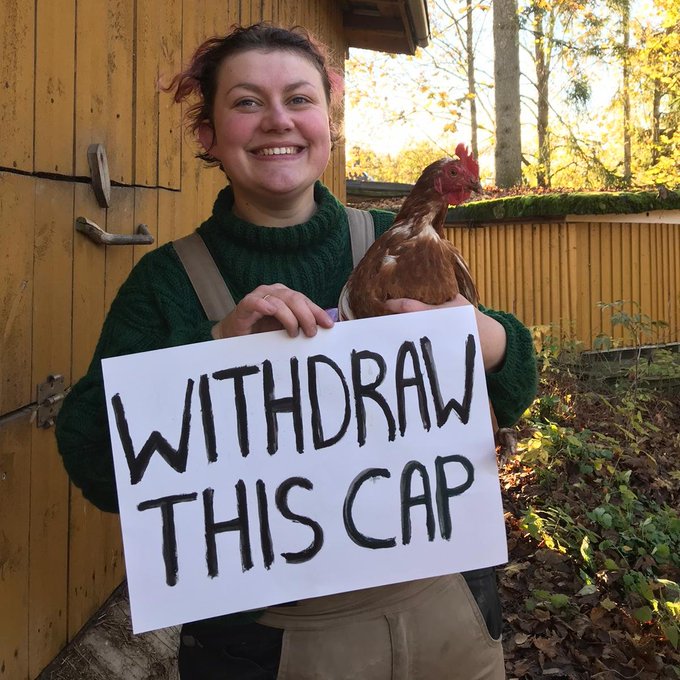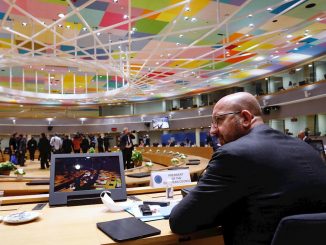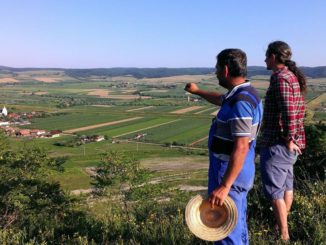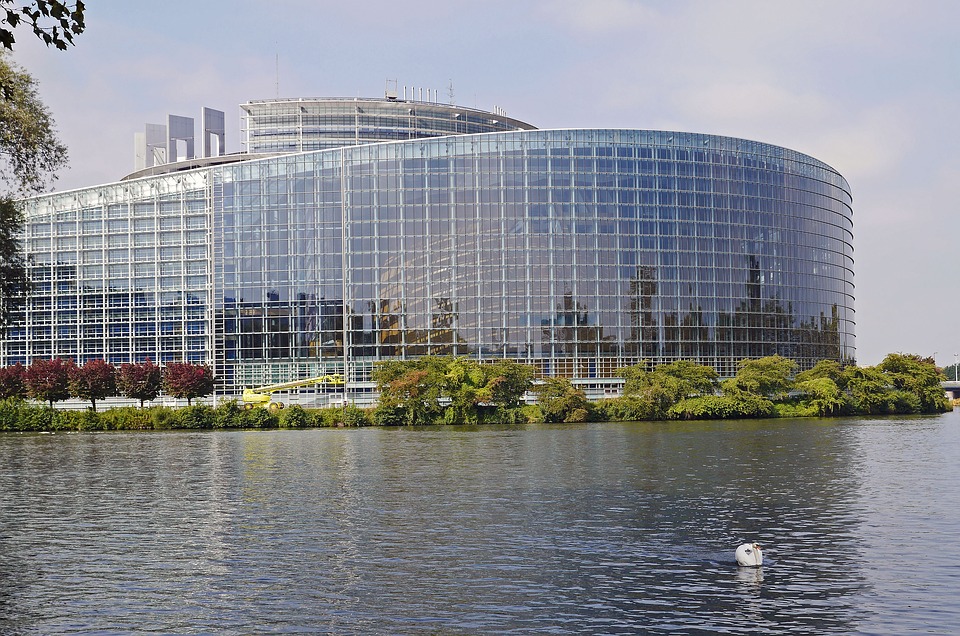
Despite the spin, after years of negotiations, the CAP to be voted on this week in Strasbourg does little of substance to really address the crises – climate and biodiversity – and does as little as possible to address fairness. The CAP will almost certainly pass the plenary vote. And there will be much talk of the greenest CAP ever, but this is mostly hot air unfortunately. Here we outline what’s being voted on in plenary, present related survey data from EEB/Birdlife, IFOAM EU, and share the views of Sommer Ackerman of the Withdraw the CAP movement.
The CAP plan was poor to begin with
This soon-to-end CAP process began with a Communication in 2018 which was more about spending money where it was likely to be spent, than with addressing all the challenges agri-food and rural areas face.
‘Agricultural funding may be allocated where it is likely to be fully spent, rather than where it addresses key needs and produces results,’ said João Figueiredo, the Member of ECA responsible for briefing paper, ‘This reflects a culture of spending rather than a culture of performance.’
The European Count of Auditors (ECA) was critical of the 2018 CAP plan, and in the intervening years, it has unfortunately got worse. The Parliament and in particular the Council of Ministers weakened it into the shell it is now. The way the Parliament’s own internal processes were ignored or circumvented is not a good sign for democracy – when, for example, the environmental committee achieved some shared competencies. Read about this here and here.
And Now?
This has been, in short, an epic wasted opportunity to start to steer the ship onto more sustainable waters. Instead, what we have is flexibilities for member states to avoid the real work of transition, a CAP incompatible with the Green Deal, with stagnancy and backsliding underpinning it. Moreover, the evidence is unreliable, even where there are supposed improvements. The “performance system” is simply about checking that the money is spent, with efficacy and impact on the ground to be assessed sometime later. Flagship proposals such as eco-schemes are, for the most part, about bringing people into a system with ecological ideas – the ecological transition will have to happen some other way, some bother time.
The Details
The Green Architecture
25% is smaller than 30%. 25% – eco-schemes in the coming CAP – is smaller than 30% – the greening proportion in the current CAP – and we are supposed to be in an ecological emergency. This in itself is backsliding, and contravenes the no backsliding principle. Where the rest of the green architecture more impactful, a case could be made for wider tools making the whole thing a little better overall. But, in reality, they aren’t. In fact, the rest of this architecture (conditionality, SMRs Pillar 2) does little new of significance, considering the climate and biodiversity emergencies. Spending in Pillar 2 can be used to reduce the eco-scheme % down to 12.5%. Even without utilising Pillar 2 (or an aspect of conditionality), Member States (MS) can opt to spend 20% only on eco-schemes, with a two year “learning period”.
The only positives here are that two practices have to be included in ecoschemes, and that, based on our own assessment of what MS have submitted, precision farming has not been chosen by MS for the most part ( In our view, precision farming and animal welfare were incorrectly allowed as an eco-scheme by the Commission during this process, which in itself was a weakening of eco-schemes).
What will be submitted by MS in their Strategic Plans is still to be assessed by the Commission, and it is here that the details will reveal the reality of the ambition. However, signs so far are not at all good.
Ring fencing for environment and climate action
There is 35% ring fencing for environment and climate action in Pillar 2, but Areas of Natural Constraints (ANC) top-ups have 50% weighting towards climate spending, and Animal Welfare (AW) have 100%. The status quo without ANC+AW is 43%, so the agreement actually decreases environmental ambition. Other environmental spending has no tracking mechanism (e.g. by Producer Groups, or when included as recitals which are effectively meaningless), while there is no ring-fencing of support for investments benefitting the environment. The European Count of Auditors (ECA) estimated the climate spending of CAP to be exaggerated (its 18% not 26% ECA expressed) but nothing has changed – then or now. The Commission has ignored the ECA on this, while proposing possibly changing methodologies in 2025.
Conditionality
Its always a poignant, peculiar moment, the moment you first see the conditionality (previously cross-compliance) proposals by the Commission – when they first break out of their little shells and blinkingly see the light of day. This is because you know what’s proposed will not come to pass. They will, rather, be systematically worn down by the Council and Parliament in the years ahead, until nothing much changes, hope fades away, and we keep hurtling towards ever deeper crises.
What is now on the table for conditionality is, from an environmental perspective, no better than anything proposed by then Commissioner Ciolos at the start of the last decade.
The one possible exception is the GAEC (Good Agricultural and Environmental Condition) for protecting wetlands – this is new. Wetlands and peatlands can make an enormous contribution to storing carbon. Nevertheless, GAEC this will not come in until 2024 or 2025.
The GAEC on buffer strips sees exemptions; Nordic regions received exemptions on the soil cover GAEC; the GAEC on crop rotation saw the usual process of reducing rotation into meaninglessness (thereby maintaining the life cycle of pests, and thus the related need for pesticides, as rotation breaks the pest life cycle). Diversification of crops, and cover crops, are allowed in as rotation or equivalent. Plus 70% of farmers are exempt as it doesn’t apply for farmers under 10 hectares. Space for Nature GAEC is set at the measly 4% for arable only – though some MS are at least applying this to all land (e.g. Ireland). Loopholes have been left in too, allowing catch crops and Nitrogen fixing crops in.
For the SMR – Statutory Mandatory Requirements – pesticide use SMR rules 12+13 do not include mandatory IPM (integrated production, alternatives). Animal identification requirements (SMR) were deleted from conditionality (despite real life swine flu worries, a pandemic, and the origins of this SMR in the bad old days of BSE and Foot and Mouth)
Underpinning all of this, there is an extraordinarily weak control rate of 1% of farmers, while the sanctioning system remains unchanged (mostly 1% or zero reduction of payments, tiny possibility to escalate to higher penalties which is in effect the status quo).
Transfer between Pillars
This comes in at an ok level, with 25% transferable both ways. However, money stays green which is a positive: i.e. if taken from Pillar 2, the money must go into eco-schemes. Weakening of environmental ambition may arise if money is taken from a darker green measure in Pillar 2 into a weak catchall eco-scheme.
Green Deal Alignment
This is still in flux. The Parliament won a recital that states the CAP SPs will be assessed in light of the Green Deal. The recital states that by 2025 Commission will assess whether Green Deal targets are likely to be met, and readjust Strategic plans through Performance Review in 2026-7. However as the Green Deal is not yet law, MS are likely to ignore how the CAP SPs relate to the farm to fork and biodiversity strategies. (In fact, in Ireland’s draft CAP SP, section 3 “Consistency of the Strategy” has a subsection called Green Deal Targets as “likely new section”- i.e. there’s nothing in it.) . It is also the case that Commissioner Wojciechowski has said he won’t reject outright any CAP SP over green deal considerations.
Social Conditionality
While what’s in is weak, there was nothing in beforehand, so this is progress for farm workers. New “SMR-style” conditionality rules, based on existing workers’ rights and occupational safety/health directives have been introduced. While sanctioning is weak, and the system is voluntary until 2025, and ostensibly all of these workers rights are supposed to be protected by national legislation anyway, overall social conditionality is now part of CAP.
Fairness – Capping, degressively and redistribution
Here the Council effectively ignored the Parliament, despite co-decision, and yet again we have capping with exemptions and convergence delayed for longer. So MS may – but are not obliged to – cap (put a ceiling, or upper limit on) payments and if so, it’s 100% capping at E100,000; 5% above E60,000 and proportional tranches below that. There are also salary offsets, though this could at least regularise otherwise exploitable labour.
Despite 19 MS having completed convergence, those remaining are stubbornly holding money where it is. Internal convergence level is set at 85% – the Parliament wanted 100%. – and MS can drag this out until the end of the coming CAP period (i.e. 2026/2027). Nevertheless, for many farmers, even the small progress made equals a long overdue transference of monies. This will probably mean that some vocal opponents of this CAP will vote for it – if their MS has improved its convergence and their constituents will benefit. No change for external convergence, which seems quagmired.
Smaller farms can also be excluded from funding, even with redistributive payments on first hectares. One interesting thing to note on the Commissioner here is that, while the Green Deal is not a red line in assessing the CAP SPs, support for small farms is.
Performance model
The new “results-based”, “performance” model of the CAP using indicators is a start but it is flawed. Indicators are not complete; integrated production using alternatives to pesticides is not measured; while there is less information in Annex three so assessments will be more difficult for the Commission. Performance is much more about tracking spending than about impact, as the Parliament wanted. There are of course no financial sanctions such as EU funding being held back contemplated.
As one Parliament insider put it – “the CAP emperor has no clothes and no teeth”.
Consultation
Civil Society consultations have been patchy, with some MS engaging regularly and others excluding and ignoring stakeholders. After submission, evaluation by the Commission will be crucial, as will the transparency of this process.
What do others from civil society think?
European Environmental Bureau (EEB), Birdlife, IFOAM EU and climate activists have all found the process wanting. EEB and Birdlife conducted a survey of national experts from 22 countries in their networks a traffic light benchmarking system of how countries score on each of the criteria.
Almost all MS scored “poor or very poor”… “indicating that the CSPs are unlikely to deliver significant improvements with regards to environmental and climate objectives” according to EEB. Lack of the necessary information, lack of space for nature targets and measures, poor levels of protection – or little information – for peatlands and grasslands, badly funded or weak environmental schemes, mixed to poor participation and accountability, were cited.
IFOAM EU also conducted an analysis “based on organic farmers associations’ feedback across 19 countries” which “shows that unless draft CAP national Strategic Plans are significantly improved in several Member States, the new CAP will not contribute to a significant development of organic farming in the EU.”
Sommer Ackerman of the Withdraw the CAP movement of climate activists finds it “almost laughable” that the CAP being voted on on 23rd November claims to be green. In a letter to MEPs it was stated “the EU’s agricultural sector already accounts for approximately 10% of the EU’s total GHG emissions and that is a number that cannot be ignored. The emissions created in the EU do not just affect EU citizens but mainly MAPA (Most Affected People and Areas). The EU has a climate debt to the world, especially to MAPA. Each policy created and signed must bear in mind that the EU has already emitted far too much. Urgent climate action isn’t an honourable duty, it’s reparations for the climate injustice. By voting for the CAP, the EU openly signs for the suffering of millions of people in MAPA also including EU citizens, as we see heat waves and wildfires globally as a result of global warming that will be caused by this harmful CAP reform.”
The lack of EU Green Deal alignment and lack of mechanisms for accountability were also highlighted in the letter. By voting this CAP down, MEPs still have a chance to avoid “ruining the confidence of the young” and “destroying … scientific credibility”. Ackerman continues: This deal is incompatible with the promises that the EU Parliament has made to transform agriculture and it is not aligned with the Climate Law and Biodiversity strategy or the Paris Agreement; furthermore, this deal will annihilate the Green Deal, which needs saving in order for the reform to be true to its name. This is our last chance. With every growing climate catastrophe more and more people open their eyes to the reality we live in. The more MEPs that vote no, the more chance there is at changing the system. The right thing can still be done and this can be stopped, so please vote this CAP down.”
More on CAP
Slashing Space for Nature? Ireland Backsliding on CAP basics
Civil Society Organisations Demand Open and Ambitious Approval of CAP Plans
CAP Strategic Plans: Support to High-Nature-Value Farming in Bulgaria
Parliament CAP-itulation | Council-Driven Compromise Deal Scuppers Fair, Green CAP
Withdraw The CAP Movement Takes on Timmermans, Trilogues and Parliament Plenary

